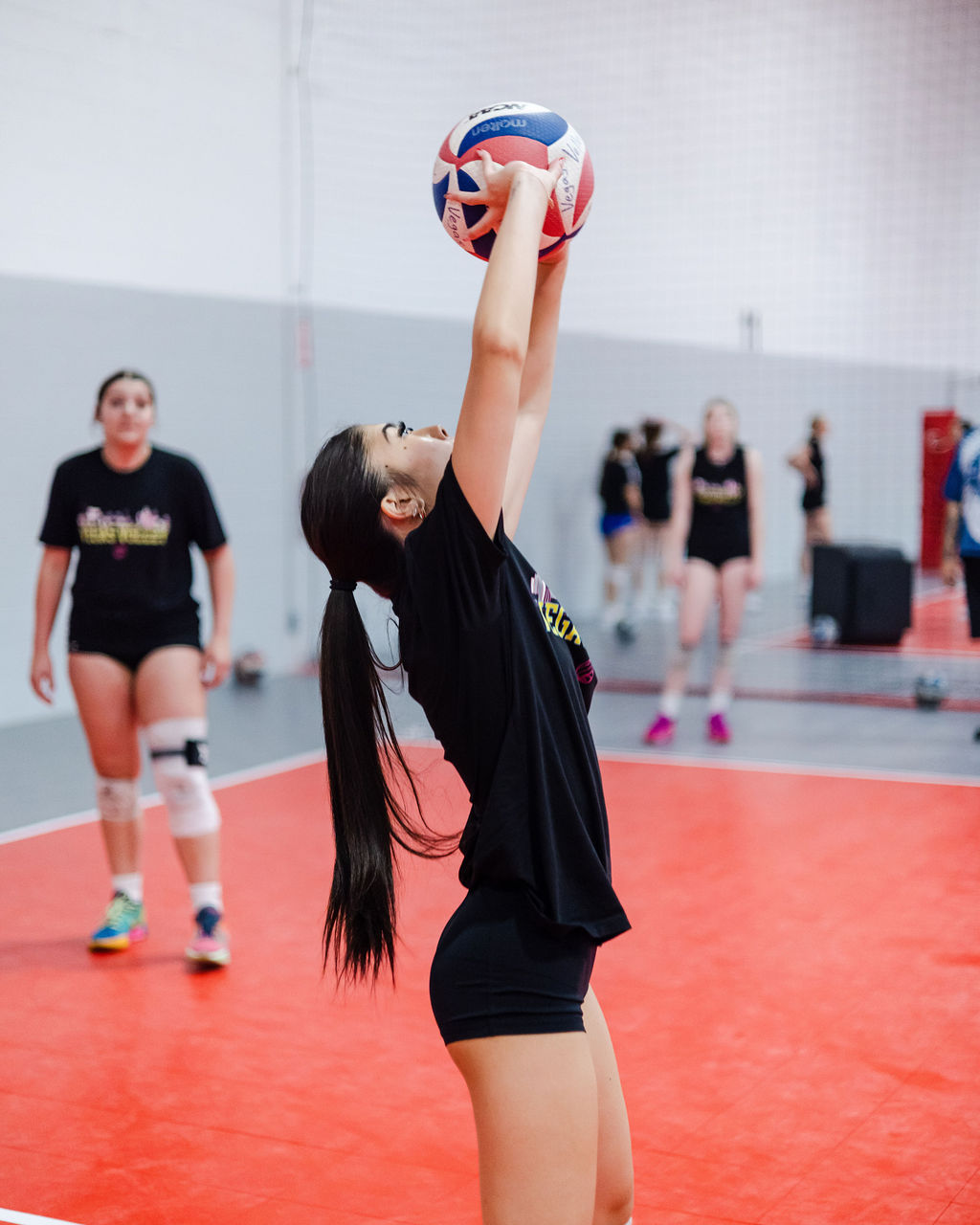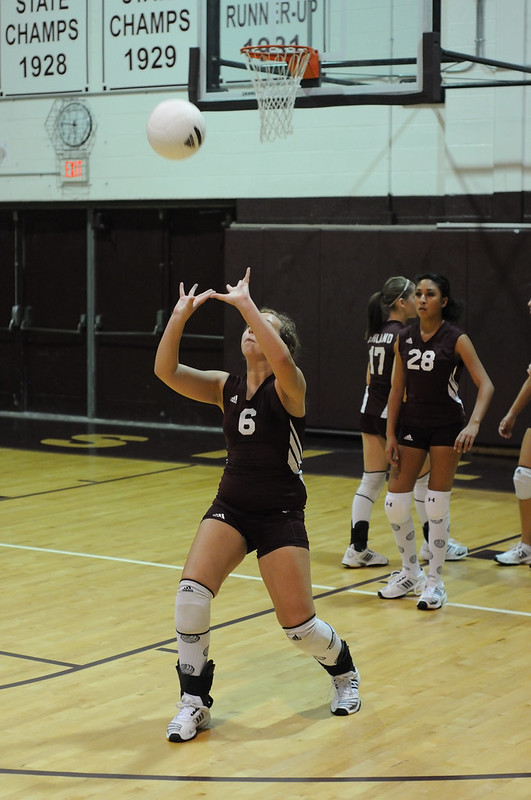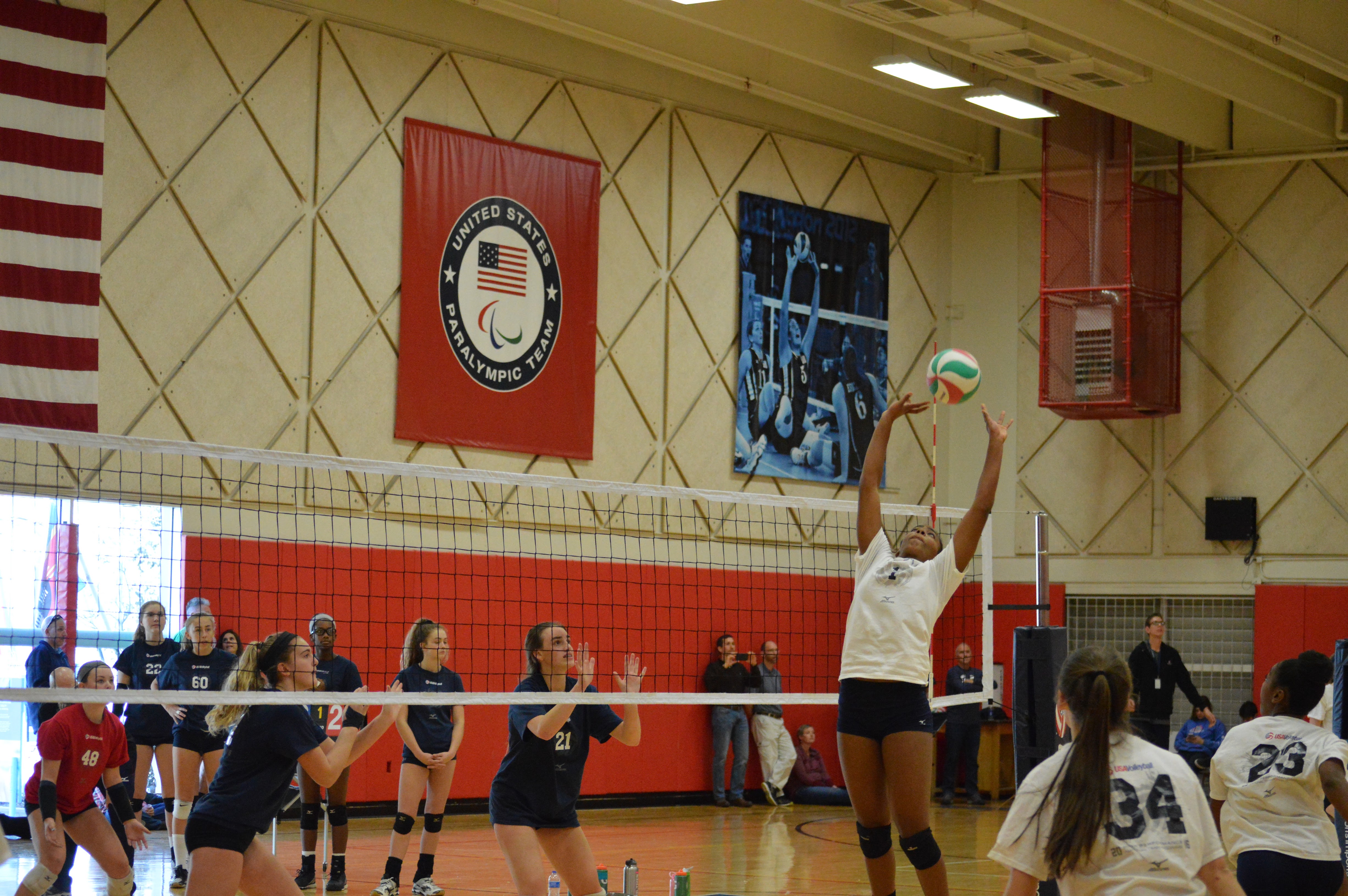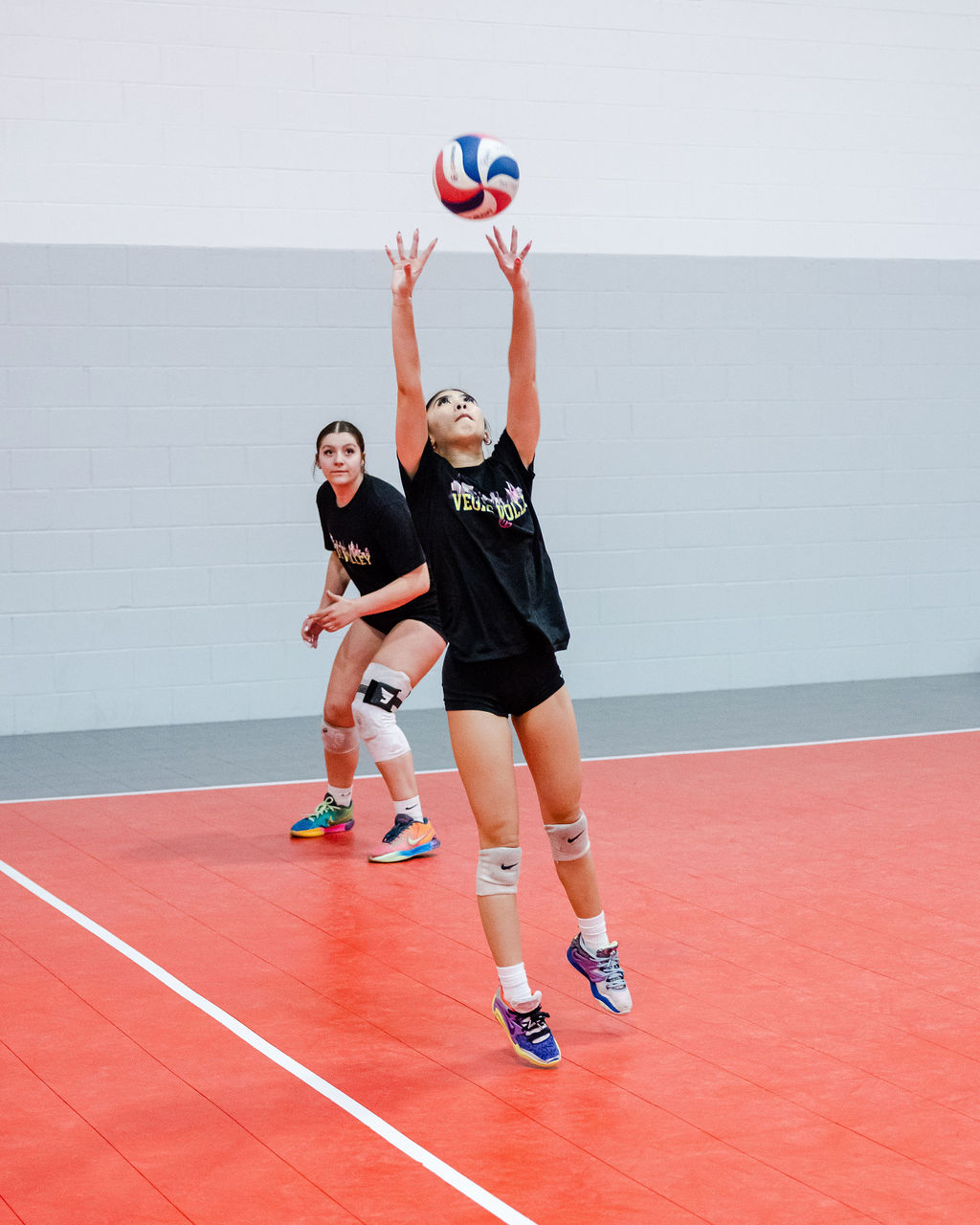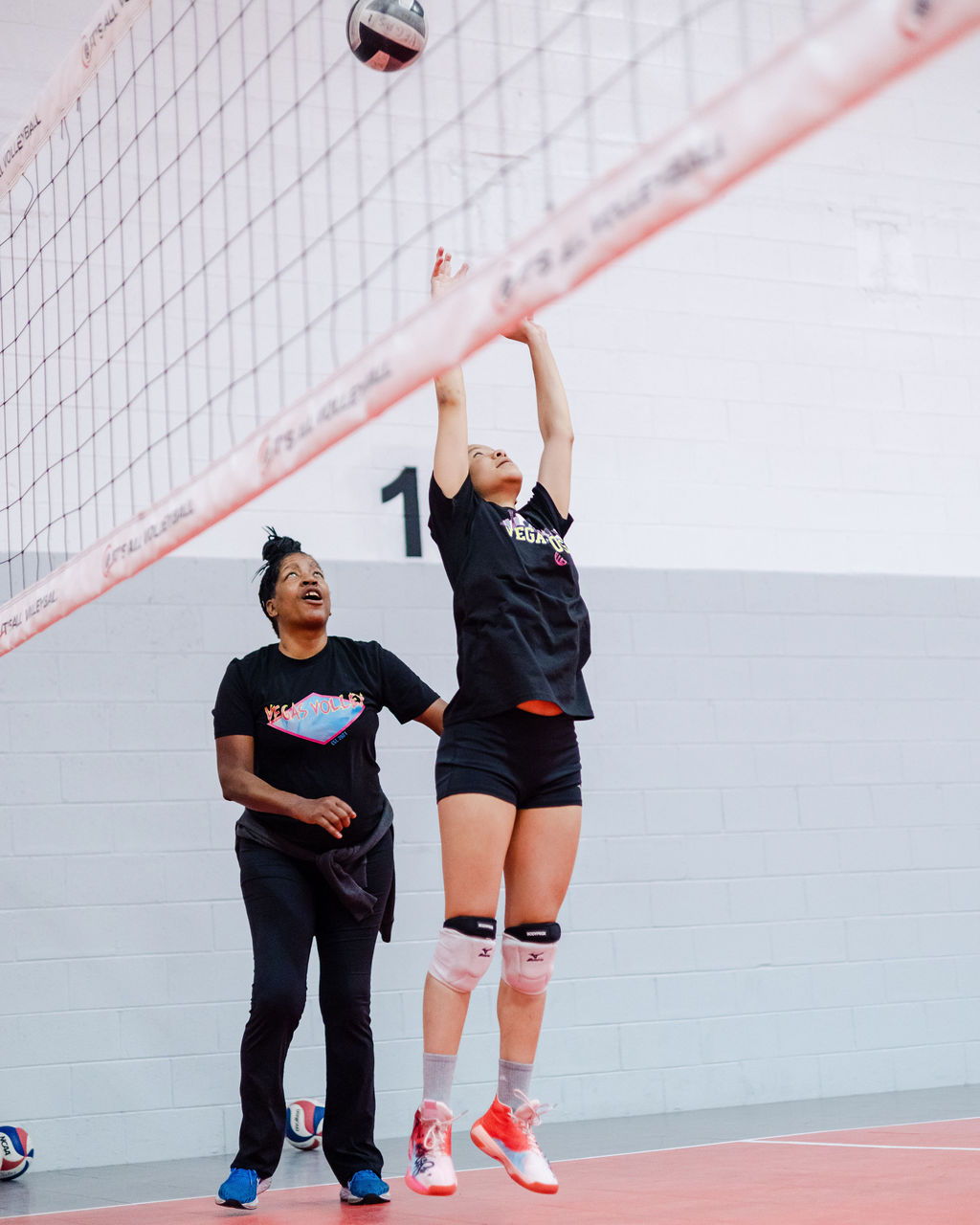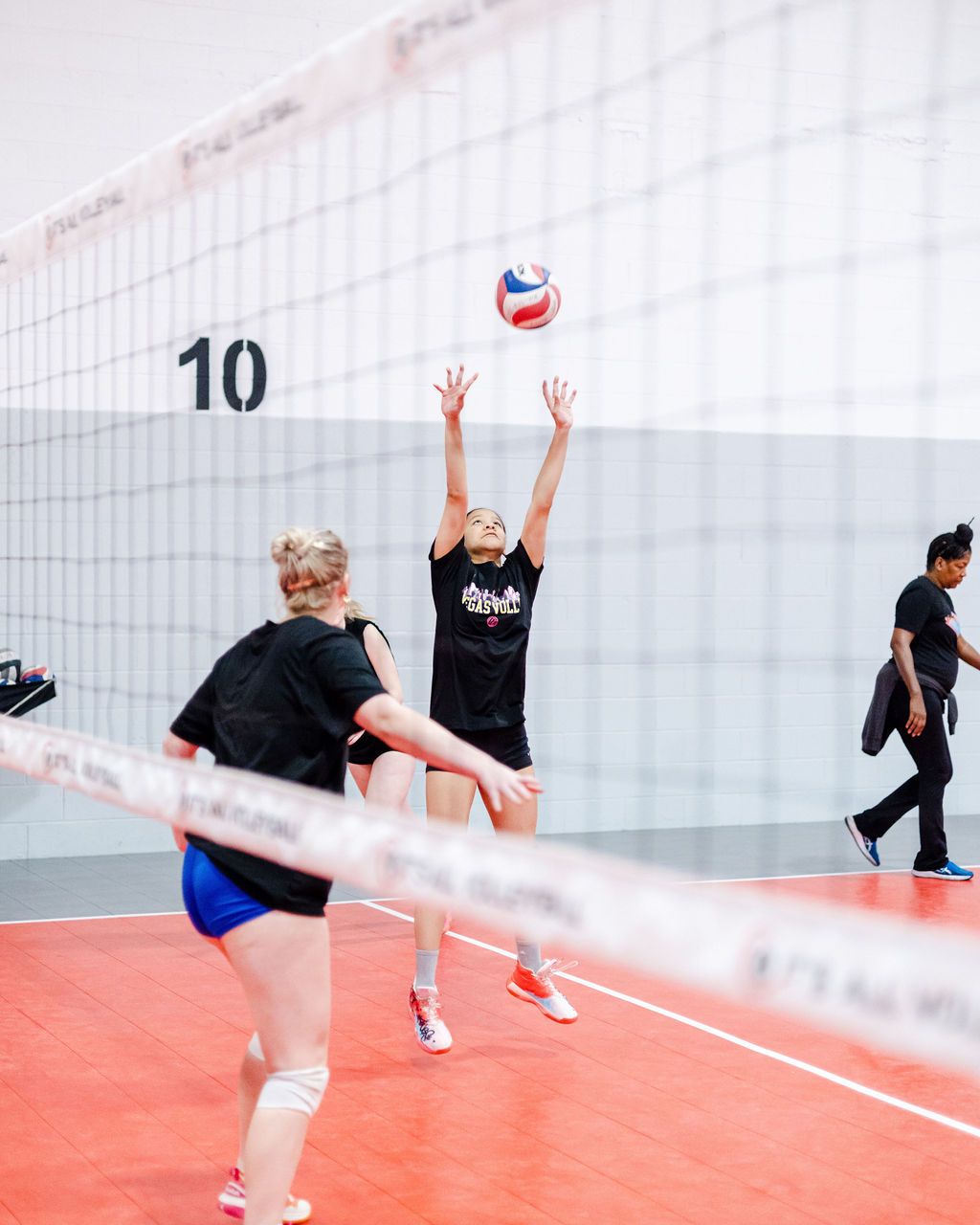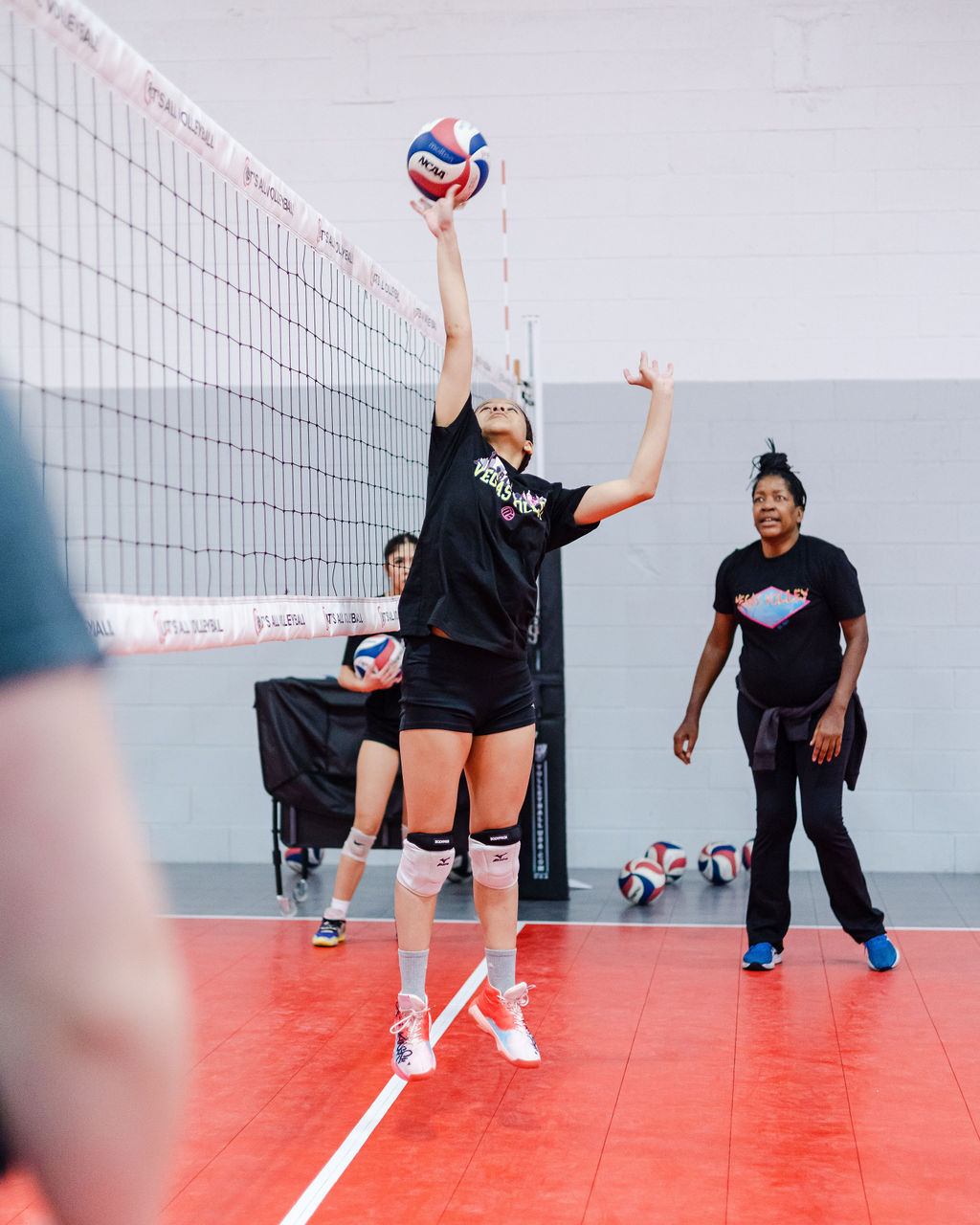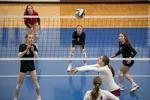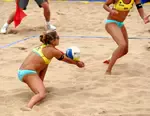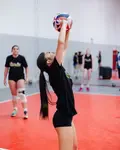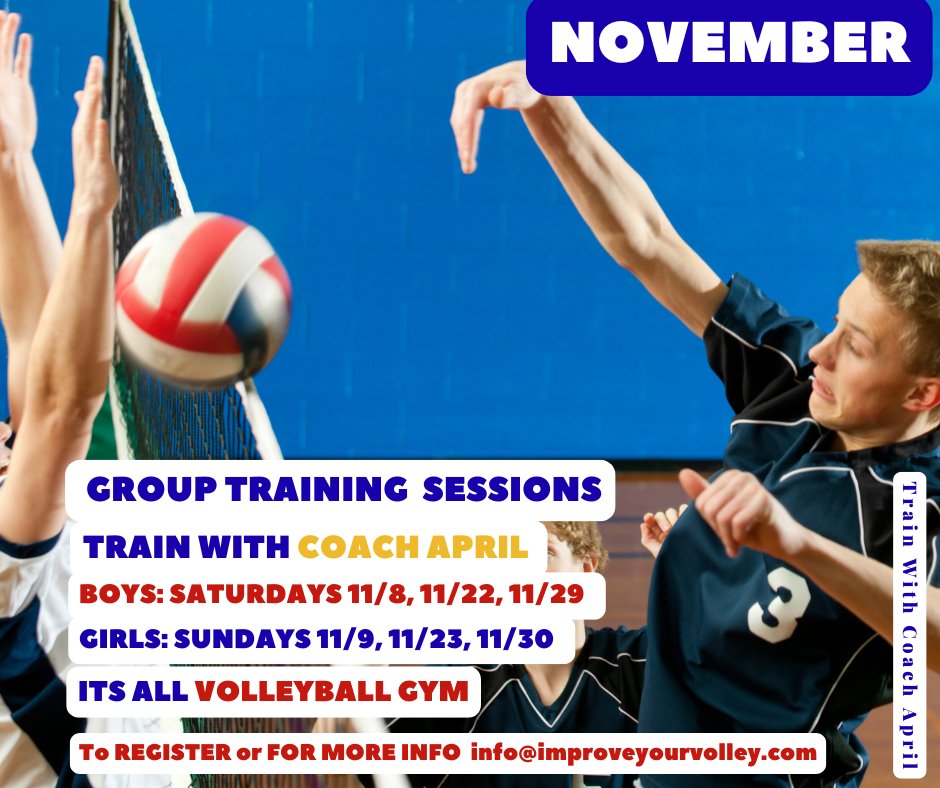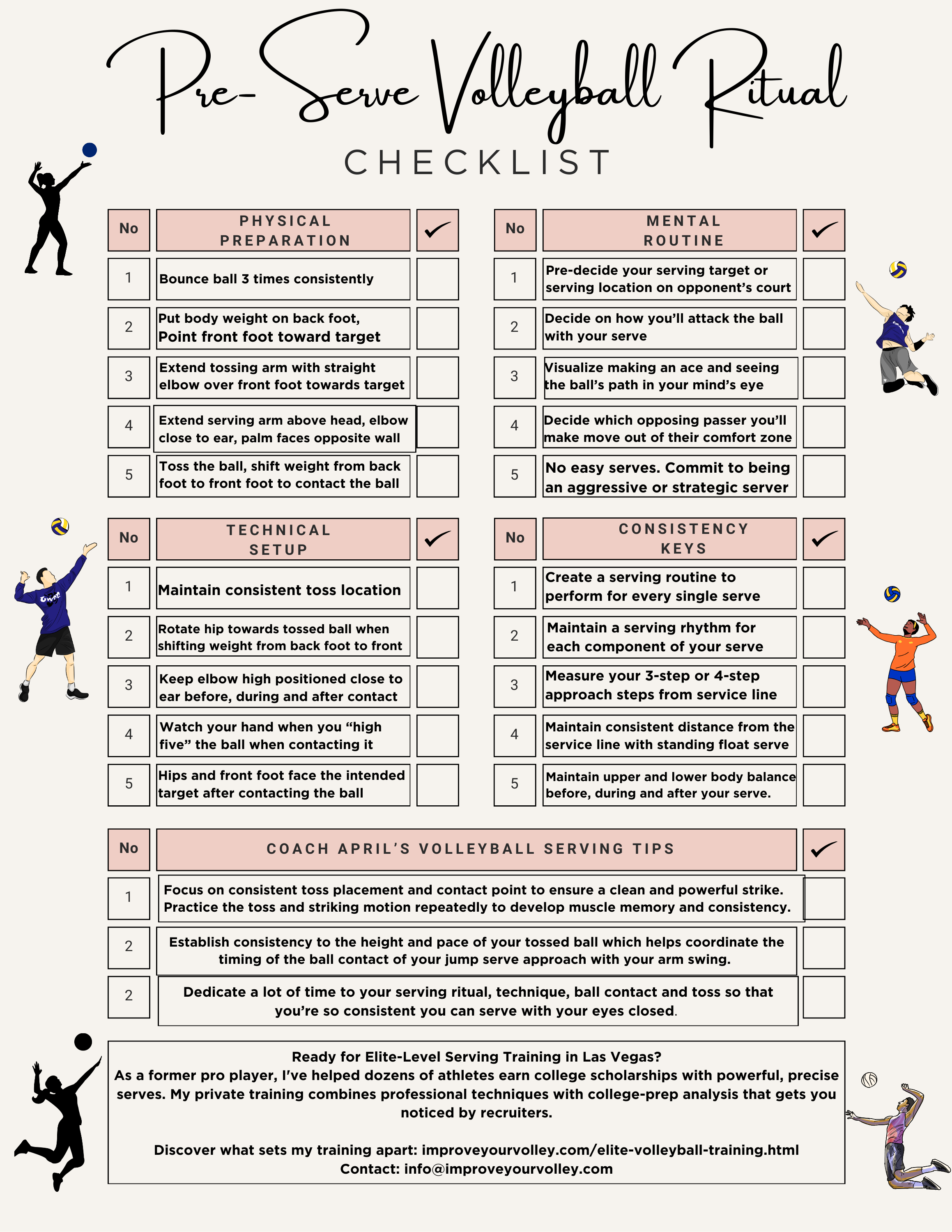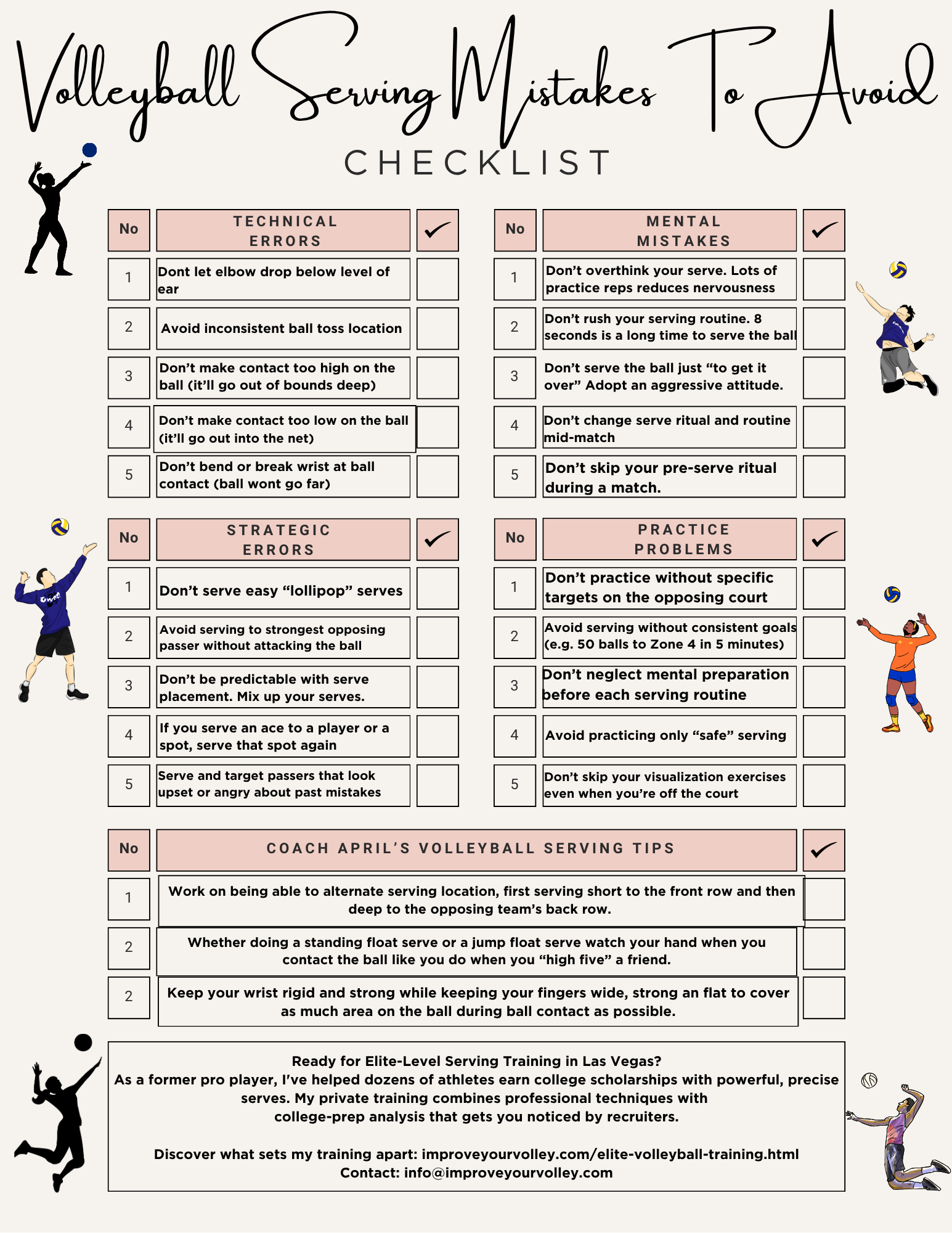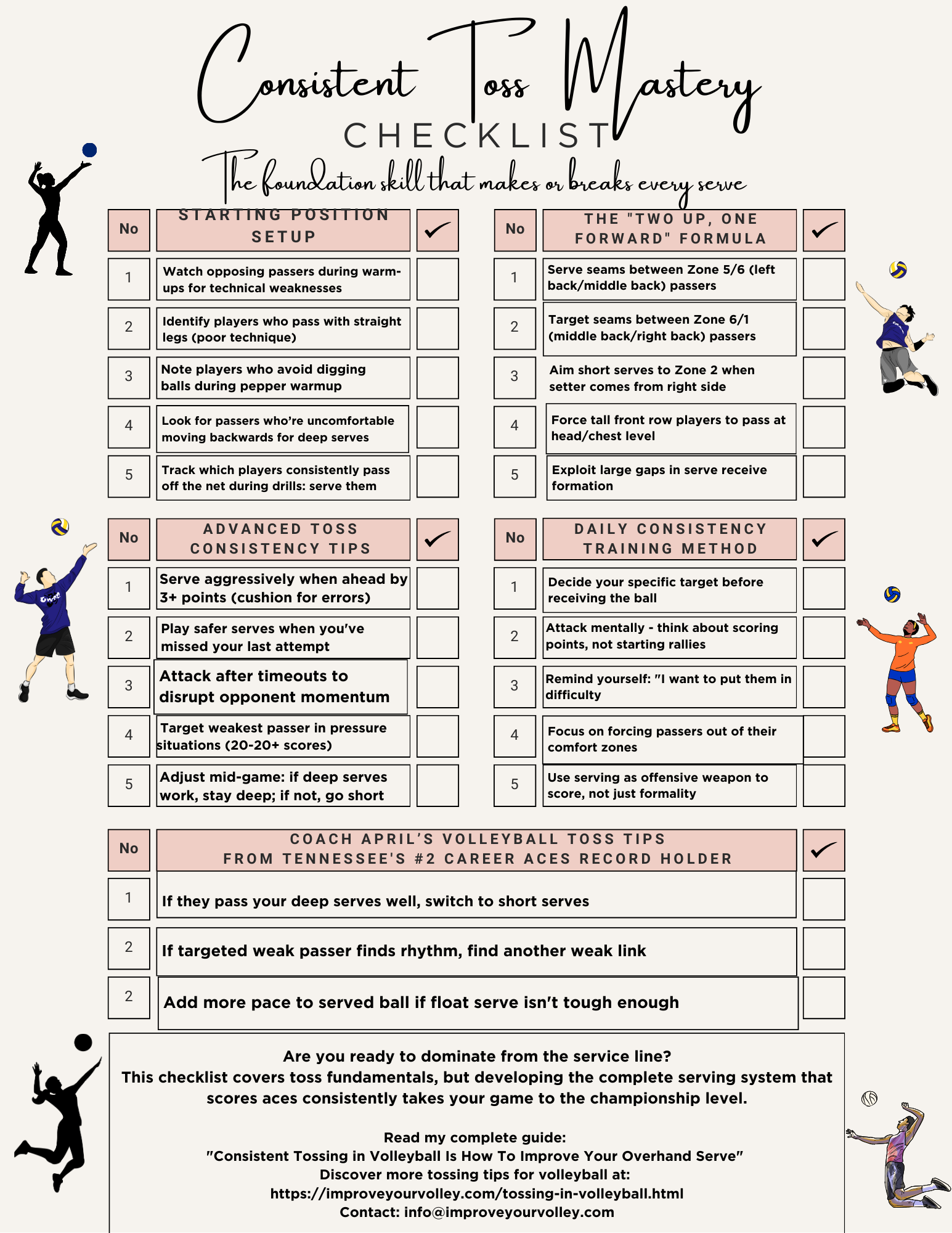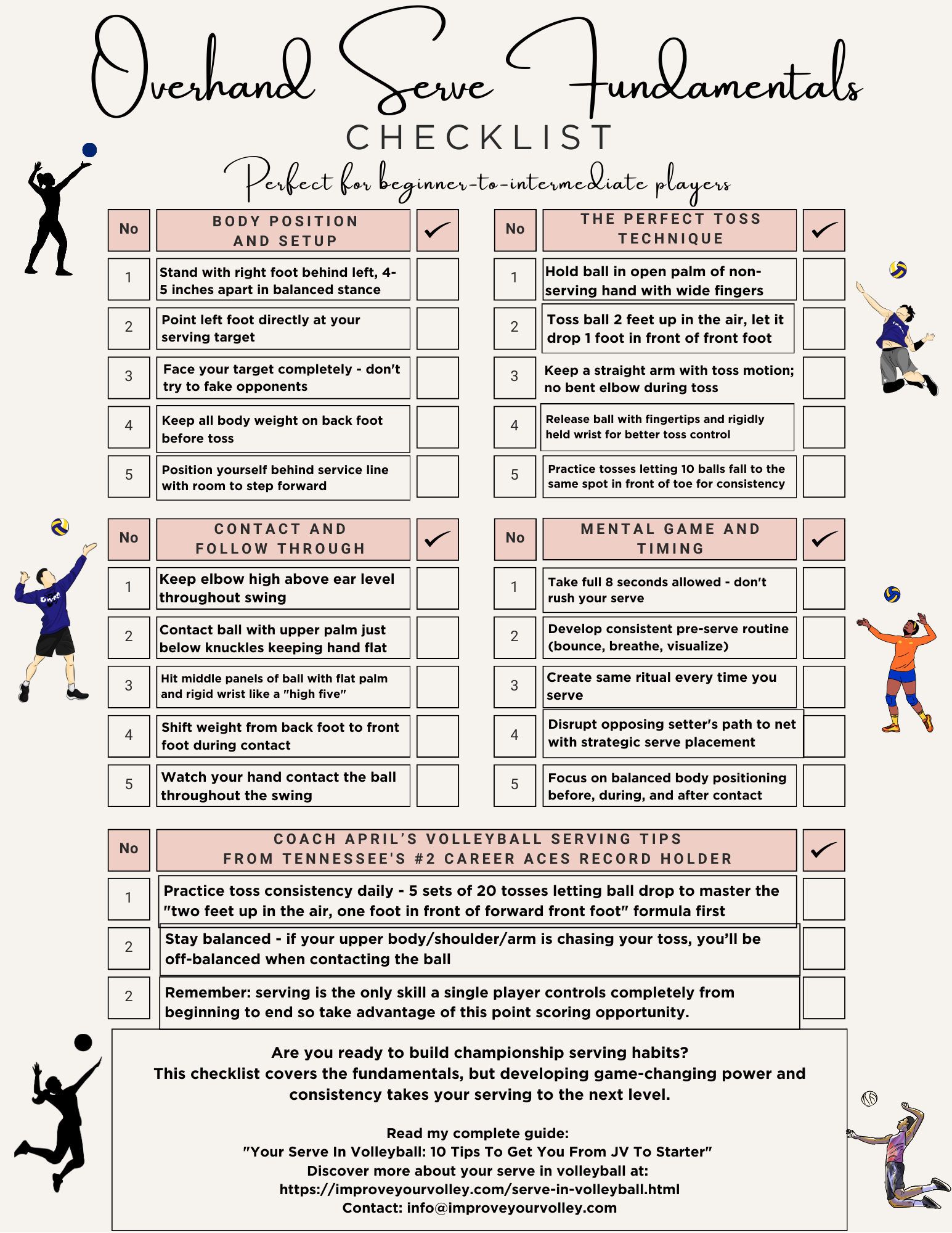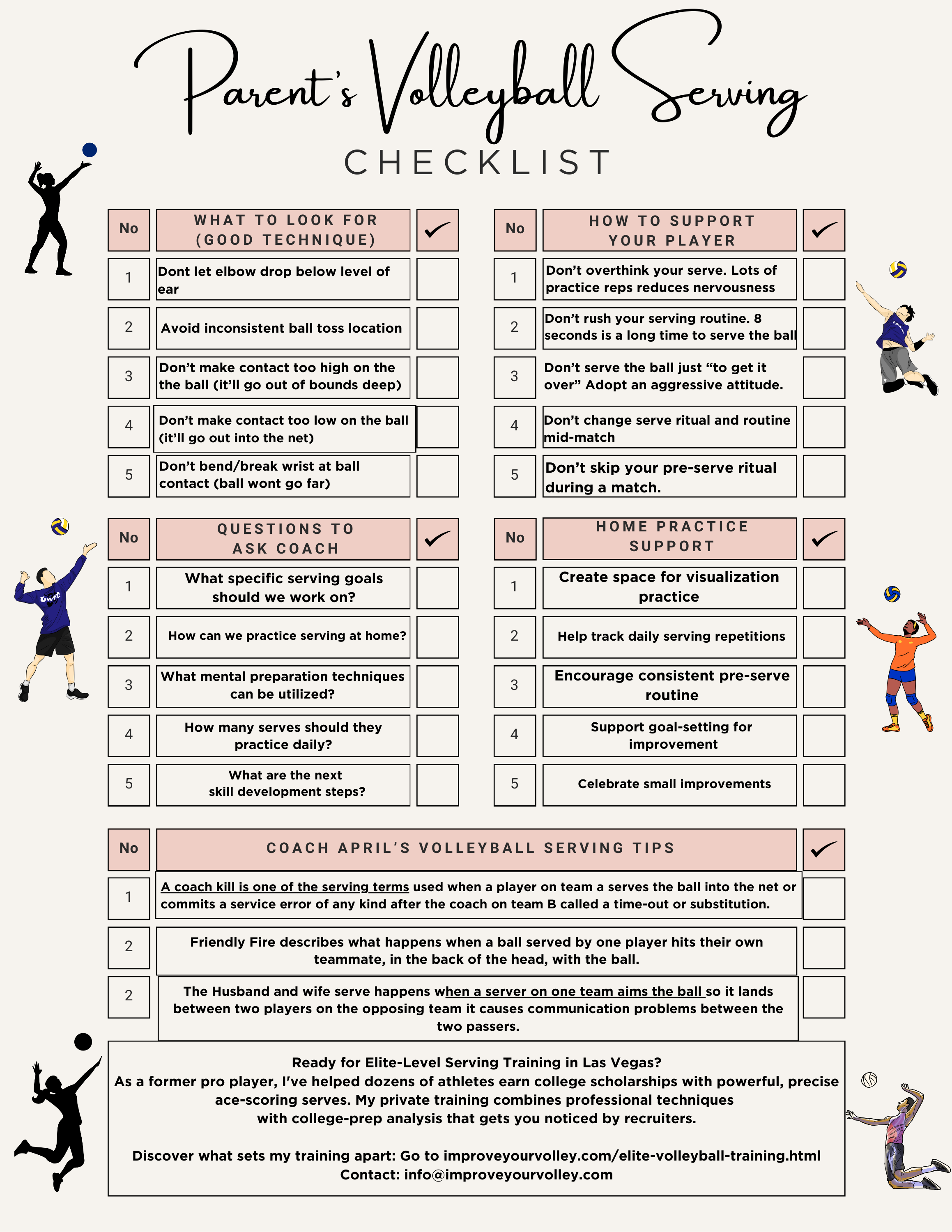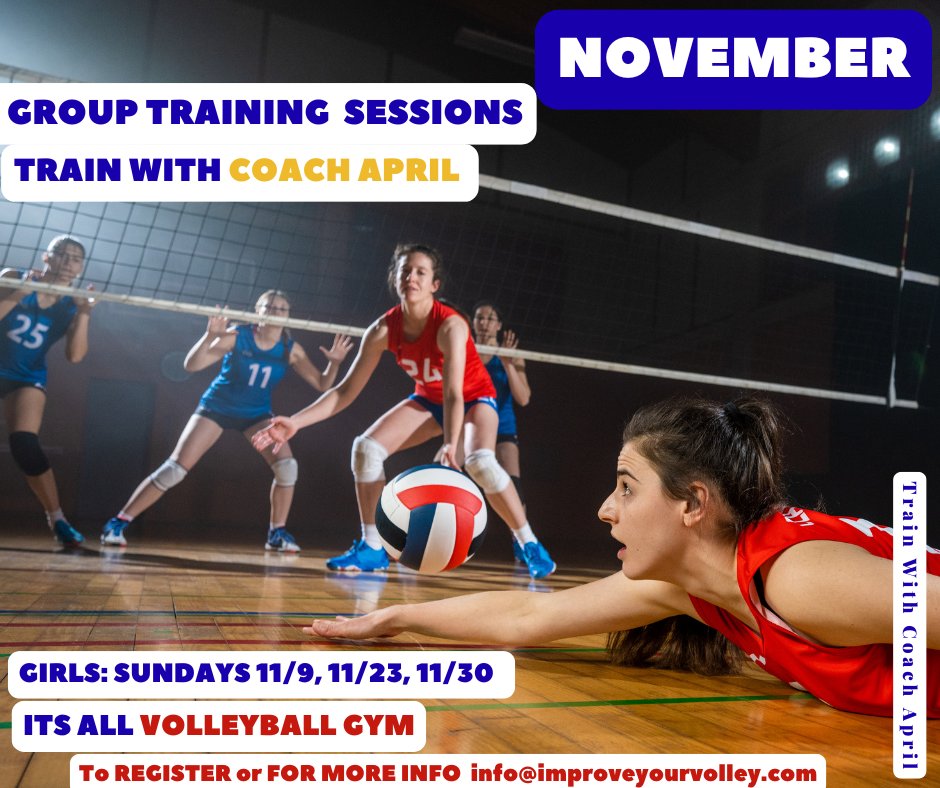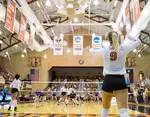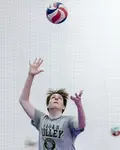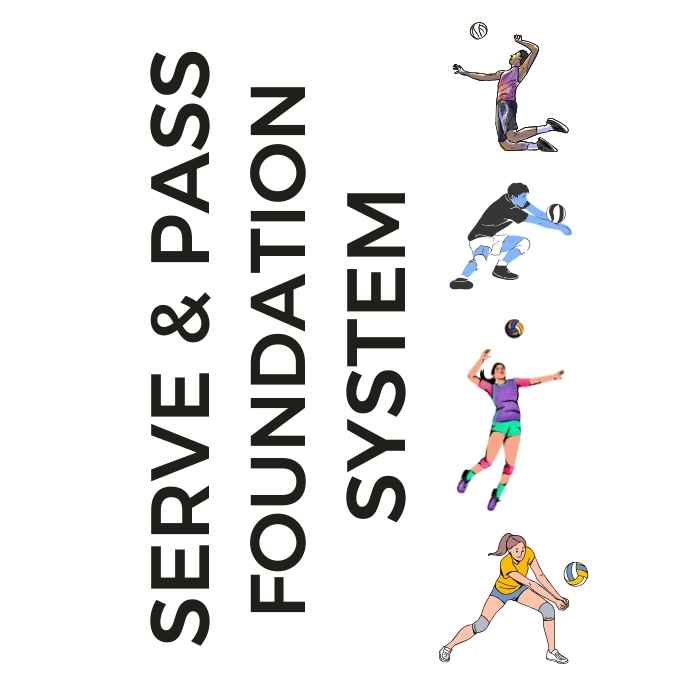
Serve + Pass Foundation System: The Complete Skills Arsenal The two-skill mastery system that transforms inconsistent players into the athletes coaches build their lineups around. Stop Struggling With The Two Most Important Skills In Volleyball!
- Improve Your Volleyball with Coach April
- Questions for Volleyball Players
- What Is A Setter In Volleyball FAQs
What Is A Setter In Volleyball? My Setting Guide With Answers To FAQs
Learn what is a setter in volleyball, from essential skills to winning strategies I give answers to setting questions and practical tips to improve your game.
What Is A Setter In Volleyball?
My Setting Guide With Answers To FAQs
The setter in volleyball is often called the quarterback of the team - they're the playmaker who runs the offense and touches the ball on nearly every play.
Think of them as the team's offensive coordinator, responsible for turning less-than-perfect passes into scoring opportunities for their hitters.
A setter's primary job is to
- be the second player to contact the ball during a rally (after their passer in serve receive has passed the ball to them, close to the net, having made the first contact after the opposing team has served the ball into their court)
- re-direct the ball using the overhead setting technique
- to the zone of one of their 3 or 4 eligible front or back row hitters in order for their attackers to score points.
Great setters combine technical skills, tactical awareness, and leadership to make split-second decisions that keep opponents guessing.
What Is A Setter In Volleyball?
The Definition And the Basic Role
The setter plays in position 2 (when in the front row) or position 1 (when in back row) in the rotation and is distinguished by their unique role: they're the second player to touch the ball in most offensive plays.
After a teammate passes the ball (first contact), the setter positions themselves under the ball and delivers a precise set (second contact) to a hitter who attacks (third contact).
Watch Izzy set Piper on the right side during private training with me. Piper working on transitioning off the net fast and then accelerating the last two steps of her spike approach which propels her into the air while swinging high and fast to spike the ball.
What makes the setter position special?
- They handle roughly 30-35% of all ball contacts during a match
- They must read and react to plays faster than any other position
- They're responsible for setting the offensive tempo known as the speed or pace of the set
- They need to maintain constant communication with all teammates
Key Setting Responsibilities:
What You Need to Improve
If you're a setter, you'll have more responsibilities than any other player on the court.
Let's break down exactly what you need to focus on to excel in this position:
What Is A Setter In Volleyball?
Running the Offense
The most common volleyball offense strategies set to the left side: The "Hut" - a medium high/medium speed rainbow shaped set that fails inside the left antenna after peaking 5-6 feet above the net. Or The "Go" - a fast speed/low set with little-to-no-arc that falls inside the left antenna after peaking 3-5 feet above the net. Watch my Collegiate Breakfast Club players in our hitting lines working on reps.
When it comes to running the team offense a setter is responsible for
- Calling offensive plays that keep your team in rhythm
- Making quick decisions about which hitter to use
- Reading and reacting to the opposing team's defensive weaknesses
- Controlling the game's tempo (knowing when to speed up or slow down the pace of sets)
What Is A Setter In Volleyball?
Managing Your Sets
When it comes to managing your sets as a setter you're responsible for
- Delivering consistent, hittable balls to all hitting positions
- Adapting your setting style based on pass quality
- Creating advantages for your hitters against blockers (set the hitter that has the short opposing blocker in front of them)
- Maintaining accuracy even when out of system
What Is A Setter In Volleyball?
Court Awareness and Communication
When it comes to communication and court awareness as a setter you're responsible for
- Constantly scanning the court for information
- Using clear hand signals with your hitters
- Giving and receiving feedback during rallies
- Leading your team through tough situations
What Is A Setter In Volleyball?
A Real Game Example: A Setter's Decision Chain
Watch as I coach during one of my summertime Collegiate Breakfast Club Boot Camp sessions where players come to get reps in before their upcoming season.
When the ball is passed, you'll need to:
1. Quickly read the pass quality
2. Check your hitters' positions
3. Spot the opposing blockers
4. Remember who's hitting well
5. Make your setting decision
6. Execute perfectly
All of this happens in just a few seconds - that's why setting requires both physical skill and mental sharpness.
Can you see the similarities now between a setter and a quarterback in football? Or a setter and a point guard in basketball?
All these positions are run by the players who run the offensive plays for their team.
What Is A Setter In Volleyball?
A Pro Player Tip
The best setters I've coached don't just focus on perfect technique - they master the art of making their hitters look good. Even with an average pass, they find ways to create scoring opportunities.
Essential Setting Skills
Your Path to Success
After coaching countless setters, I've identified the key skills that separate good setters from great ones.
Here's what you need to focus on:
As a setter here's my quick breakdown of the technical skills you should be working on with setting drills on a daily basis:
- Hand Position: Form a consistent triangle with your thumbs and forefingers
- Footwork: Quick, consistent and efficient steps to get under the ball
- Balance: Body control and body part awareness so that you stay squared to your target, even when jump setting
- Contact Point: Connect with the ball at the highest point of your reach with both extended arms and ball-shaped hands at the same time above your forehead
- Follow-through: Direct the ball with your fingertips, not your palms
What Is A Setter In Volleyball:
What're the Physical Requirements?
Don't worry if you're not the tallest player - many excellent setters succeed through:
• Quick lateral movement
• Strong core stability
• Fast reaction time
• Good vertical jump (for blocking)
• Overall body control
What're Some Mental Game Essentials That A Setter In Volleyball Needs To Have?
This is where I think many young setters in training struggle the most, but I can help you develop:
- • Quick decision-making under pressure
- • Court awareness and anticipation
- • Focus during long rallies
- • Confidence after mistakes
- • Leadership presence
What're Some Common Setting Challenges and Solutions?
Problem: Inconsistent sets when passes are tight to the net Solution: Practice setting from different positions, especially while moving forward
Problem: Difficulty reading the defense
Solution: Start by scanning blockers before each play, then gradually increase your scanning speed
Problem: Losing confidence after mistakes
Solution: Develop a quick reset routine - I teach my setters to use the "three-second rule"
What Is A Setter In Volleyball?
Things To Remember
The best setters aren't always the tallest or most athletic players - they're the ones who master the fundamentals and never stop learning. Your success as a setter will come from dedication, smart practice, and a willingness to lead your team.
Do You Follow Me on Pinterest?
Follow me on Pinterest Volleybragswag to improve your game even faster!
I share alot of individual, partner and easy-to-do volleyball serving drills we do in class with my followers.
Many of these volleyball practice drills you can do at home by yourself or try at your next practice with your teammates.
If you're a B team or JV player trying to make varsity next year...your goal should be to complete 1000 reps a day of at least three of the basic skills on your own...volleyball passing, serving and setting should be at the top of the list.
From Lady Vol to Legend: Coach April Produces Powerful Passionate Players...is that you?
What Are You Looking For?
Click to Download Your Pre Serving Ritual Mastery Checklist pdf:
🎯Volleyball Pre Serving Ritual Guide -
Players! Learn How To Transform Your Serve from Weak to Weapon
Click to Download Your Parent's Volleyball Serving Checklist pdf
🎯Parent's Volleyball Serving Checklist Guide
Parents! Help Your Player Develop Championship Serves (Even If You've Never Played)
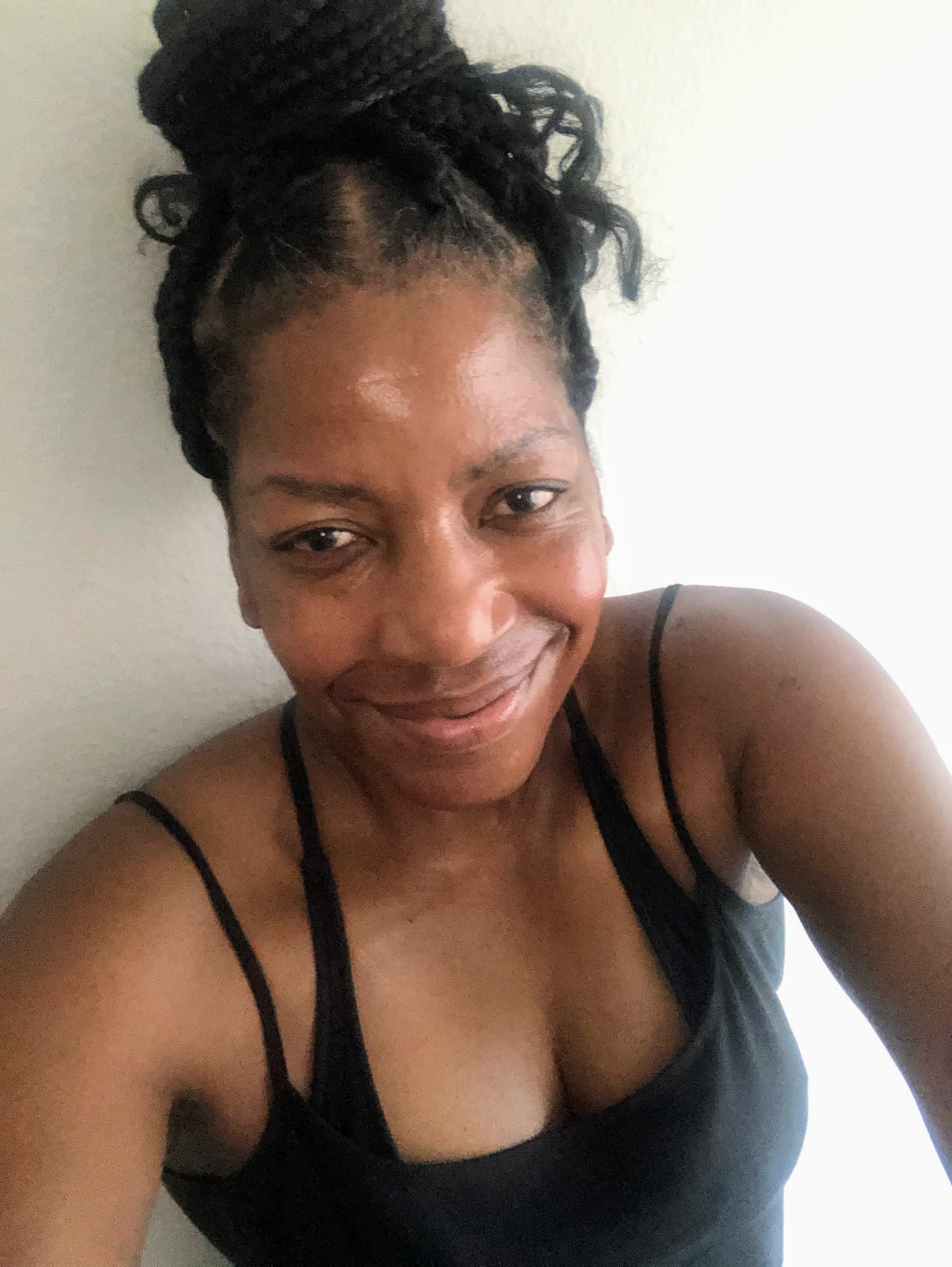
Hi there!
Thanks for stopping by. Hope you learned something today that will help you reach your volleyball goals.
Be sure to subscribe to my email newsletter so you can learn more each week!
Stay strong! Stay motivated!
-Coach April

SUSCRIBE to my email newsletter below!
 Click to learn more about the weekly volleyball classes and clinics or email info@imrpoveyourvolley.com for information
Click to learn more about the weekly volleyball classes and clinics or email info@imrpoveyourvolley.com for informationCongratulations to my seven Boys-18s Vegas Volley club players who played in two state championship finals yesterday, the 3A and 5A State champinship finals at Sunrise Mountain High School.
TOURNAMENT CHAMPIONS!
A-1 Vegas Volley VBC
In It To Win It Tournament
May 2 - 4, 2025 Tournament
Gold Medalists
18s Premier Division
Vegas Volleyball's Unsung Heroes: Celebrating Moms with Peace Love Volleyball Shirts
Ready to energize your volleyball mom journey?
Subscribe to my 'Producing Powerful Passionate Peaceful Players' email list above on ImproveYourVolley.com.
You'll receive energy-boosting tips, exclusive insights from me, Coach April Chapple on maintaining momentum in volleyball.
Let's power up the Vegas volleyball scene together!
Recent Articles
-
5 Essential Serving Tips from Tennessee's #2 Career Aces Record Holder
Dec 09, 25 11:39 PM
I've identified the 5 essential serving tips that separate confident servers from struggling ones and you'll serve with the confidence that creates aces -
The Volleyball Toss How Consistent Is Your Ball Toss Before You Serve?
Dec 07, 25 12:29 AM
The volleyball toss for the overhand serve needs to consistently be two feet up in the air and one foot in front of front foot which puts the ball in front of your serving arm. -
Shop Small: Real Volleyball Training With + Results From A Real Coach
Dec 03, 25 10:30 AM
Support a woman-owned business. Get training from a former elite pro with 13+ years coaching experience. Ditch the big box store--invest in proven results.
